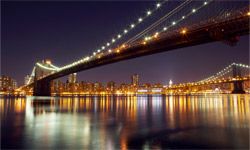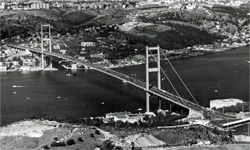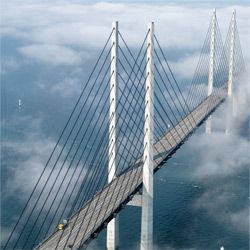Bridges have been around ever since humans began to move themselves -- and their goods -- from one place to another. Early bridge engineers had to do little more than fell a tree across a ravine or stream, but they soon discovered that they could span greater distances and haul heavier loads by putting more time and energy into their structures.
Roman engineers perfected the stone arch and used it to build aqueducts -- bridges that conveyed fresh water great distances -- and similar structures to carry traffic across streams and rivers. But the Industrial Revolution took bridge building to new heights and even greater lengths.
Advertisement
By the end of the 19th century, record-breaking bridges seemed to come fast and furious. The Brooklyn Bridge, completed in 1883, was the longest spanning bridge in the world -- until Scottish engineers completed the Firth of Forth Bridge just seven years later.
A new century brought longer, more amazing bridges. In 1937, the Golden Gate Bridge stretched its 8,981-foot (2,737-meter) back over the treacherous waters of the San Francisco Bay.
Today, engineers continue to test the limits of science and imagination. They experiment with innovative materials, designs and methods of construction. Their finished products move cars and trains. They also move people's souls. What follows is a survey of some of the most breathtaking bridges of the modern era. We've limited ourselves to just 10 bridges, but not to any particular region of the world.
Our first stop is the Hangzhou Bay Bridge in China.






